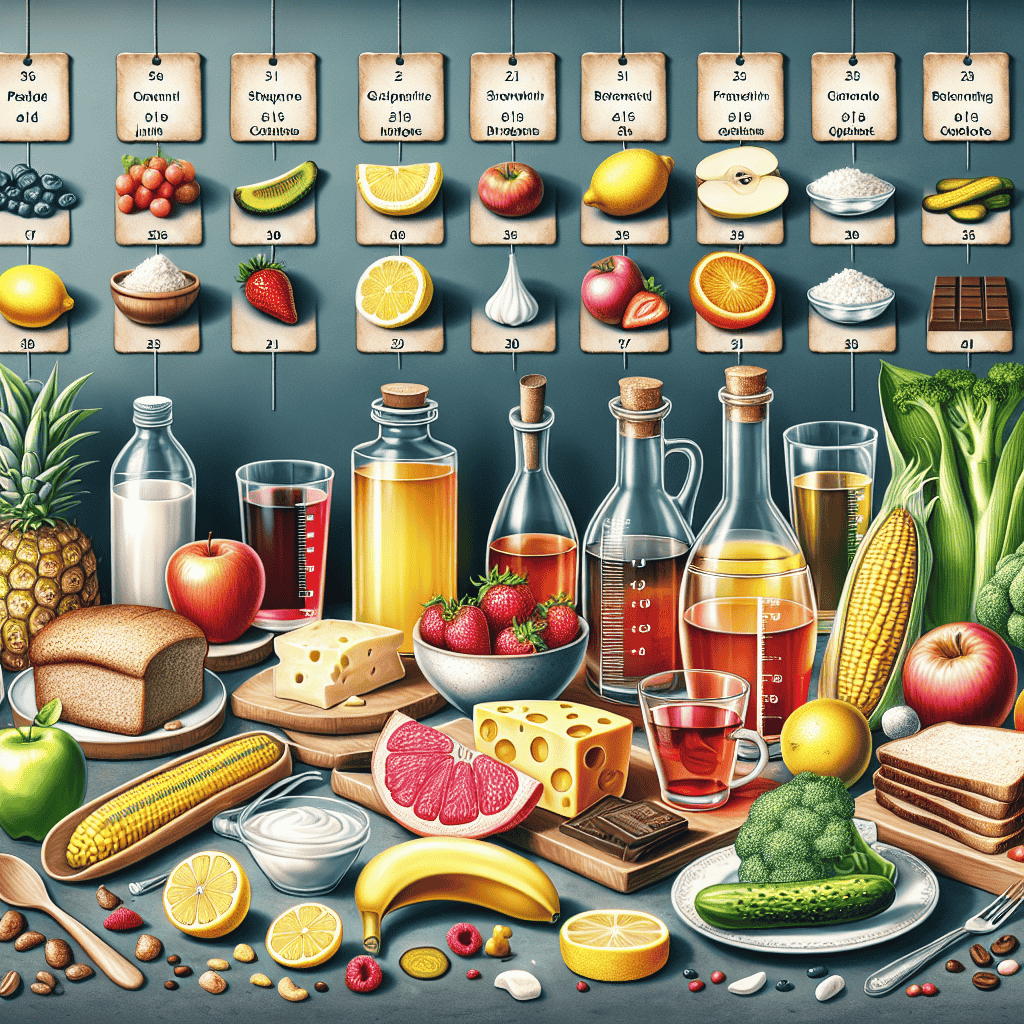The pH levels of the foods we consume can be play an essential role in maintaining our overall health. Acidic foods can influence our body in various ways, from digestion to nutrient absorption. In this article, we will explore the 25 most acidic foods, their benefits, and when it’s best to incorporate them into your meals.
What Are Acidic Foods?
Acidic foods have a lower pH level, generally below 7. Many of these foods are also nutrient-dense and can provide various health benefits, but it’s important to consume them mindfully. The key is balance—some acidic foods may be beneficial, but consuming too much can lead to discomfort or digestive issues.
The 25 Most Acidic Foods
1. Citrus Fruits
- Examples: Lemons, limes, grapefruits, oranges
- Benefits: High in vitamin C, aids in digestion, and promotes skin health.
2. Berries
- Examples: Cranberries, blueberries, raspberries, strawberries
- Benefits: Rich in antioxidants and vitamins while being low in calories.
3. Tomatoes
- Benefits: Packed with lycopene, which has been shown to reduce the risk of certain diseases.
4. Pineapple
- Benefits: Contains bromelain, an enzyme helpful for digestion.
5. Pickles
- Benefits: Fermented and can aid intestinal health; however, be mindful of sodium content.
6. Sauerkraut
- Benefits: A probiotic-rich food that promotes gut health and digestion.
7. Vinegar
- Types: Apple cider, balsamic, white
- Benefits: Can help regulate blood sugar levels and curb appetite.
8. Soft Drinks
- Examples: Soda, energy drinks
- Note: High in sugar and acid; best consumed sparingly.
9. Alcohol
- Types: Beer, wine, spirits
- Benefits/Note: Moderate consumption may have health benefits, but excess can be harmful.
10. Some Dairy Products
- Examples: Yogurt, cottage cheese
- Benefits: Probiotic properties and source of calcium.
11. Coffee
- Benefits: Rich in antioxidants, can enhance brain function.
12. Dark Chocolate
- Benefits: Contains flavonoids that are beneficial to heart health; moderation is key.
13. Processed Meats
- Examples: Salami, bacon, hot dogs
- Caution: Linked to various health risks; should be consumed in moderation.
14. Peppers
- Examples: Hot peppers (jalapeño, cayenne)
- Benefits: Boosts metabolism and contains vitamins A and C.
15. Grapes
- Benefits: Lower blood pressure and are great for heart health.
16. Apples
- Benefits: Packed with fiber and antioxidants but still mildly acidic.
17. Ketchup
- Caution: High in sugar and sodium, so consider other condiment alternatives.
18. Nuts (Certain Varieties)
- Examples: Walnuts and peanuts
- Benefits: Good source of healthy fats, but need close moderation for acidity.
19. Quinoa
- Benefits: A complete protein and gluten-free grain, good for maintaining energy levels.
20. Whole Grains (Certain Varieties)
- Examples: Brown rice, barley
- Benefits: High in fiber and nutrients, excellent for digestion.
21. Soy Products
- Examples: Soy sauce, tofu
- Benefits: Rich in protein but beware of sodium content in some varieties.
22. Seaweed
- Benefits: Rich in iodine and nutrients, great for thyroid health.
23. Caraway and Coriander Seeds
- Benefits: Can aid digestion and provide anti-inflammatory benefits.
24. Curcumin
- Benefits: Found in turmeric, known for its anti-inflammatory properties.
25. Certain Legumes
- Examples: Lentils, chickpeas
- Benefits: High in protein and fiber, beneficial for heart health.
When to Eat These Acidic Foods
Timing when to eat the 25 most acidic foods can enhance your overall health and well-being. Here are some tips:
In the Morning
- Citrus Fruits: Start your day with a glass of warm lemon water.
- Berries: Add to oatmeal or yogurt for a nutritious breakfast.
Lunch
- Tomatoes and Pickles: Add to sandwiches or salads for extra flavor.
- Vinegar: Use as a dressing or marinade to enhance meal enjoyment.
Afternoon Snack
- Nuts and Dark Chocolate: Choose a small portion for an energy boost.
- Yogurt: A great source of probiotics, especially if topped with fruit.
Dinner
- Grilled Vegetables: Incorporate peppers, onions, and tomatoes for flavor.
- Quinoa or Legumes: Add to your dinners to provide protein and fiber content.
Before Bed
- Tea or Herbal Infusions: Some herbal teas can assist with digestion overnight.
Benefits of Consuming Acidic Foods
Incorporating these acidic foods into your diet offers numerous benefits:
- Improved Digestion: Many acidic foods can aid in digestion, making them beneficial if consumed before or during meals.
- Increased Nutrient Absorption: The acidity can help break down food and make nutrients more available.
- Enhanced Flavor: Many acidic foods can elevate the taste of your dishes, encouraging you to enjoy healthier meals.
Balancing Your Diet
While it’s essential to include acidic foods in your diet, balance is key. Here are some tips to maintain that balance:
- Pair with Alkaline Foods: Include more alkaline foods like vegetables and fruits to offset acidity.
- Stay Hydrated: Drink plenty of water to help flush out excess acidity in your body.
- Limit Processed and High Sugar Foods: Focus on whole, nutrient-dense foods instead.
Conclusion: Add The 25 Most Acidic Foods to Your Diet in Moderation
Understanding the 25 most acidic foods and their benefits can help you make informed dietary choices. They can aid in digestion, enhance nutrition, and improve overall well-being. By knowing when to incorporate these foods and balancing them with alkaline choices, you can maintain a healthy and strong body. So go ahead, enjoy these foods in moderation, and embrace the vibrant flavors they bring to your plate!

